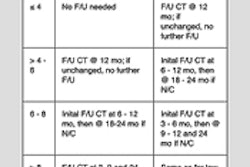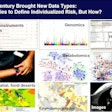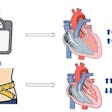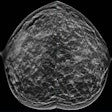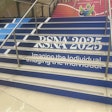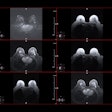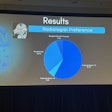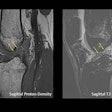Dear AuntMinnie Member,
The passage of California's radiation dose reporting law in 2012 was considered a watershed moment in the movement to better inform patients of the dangers of medical radiation. But a new study out of Stanford University underscores some of the challenges of complying with the law.
The legislation requires that information on the amount of radiation used in a patient's exam be included in radiology reports. But what's the best way to get that data from the scanner into the report?
Stanford researchers are finding that errors can occur when radiologists are responsible for manually transferring dose data. In fact, almost 10% of dose reports failed to meet the law's criteria for dose reporting.
Fortunately, there is a better way. Find out what it is by clicking here, or visit our CT Community at ct.auntminnie.com.
Talking about breast density
What's the best way to talk to patients about their breast density? In a new article in our Women's Imaging Community, Dr. Amy Thurmond from Women's Imaging & Intervention in Oregon offers advice based on how her practice handles women with dense breast tissue, including complying with the state's patient notification law.
Dr. Thurmond's practice has been performing ultrasound scans on women with dense breast tissue for the past 20 years -- usually on the same day as their mammography screening exams. But passage of the law means that more women are showing up at their facility with greater awareness of the challenges that density presents -- and they are requesting that specific imaging modalities be used as part of their screening pathway.
Learn about how Dr. Thurmond's practice deals with these patients by clicking here, or visit the community at women.auntminnie.com.
More on gadolinium
We got a strong response to our story earlier this week on the persistence of gadolinium in the brain long after MRI contrast studies had been performed. Today, we're highlighting another study that demonstrates that when it comes to acute adverse reactions, at least one gadolinium-based contrast agent has a pretty sterling safety profile.
Researchers from Pennsylvania analyzed adverse reactions to the agent over eight years of use at their institution, and found the number of reactions to be "infinitesimally small." Learn more about the study by clicking here, or visit our MRI Community at mri.auntminnie.com.





